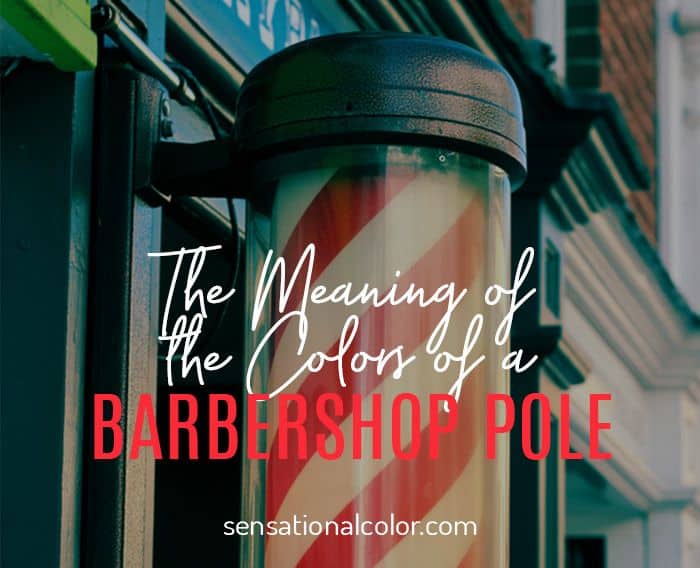The barber pole is an iconic symbol that immediately conjures images of old-fashioned barbershops with swirling stripes outside their doors. But have you ever wondered what the red, white, and blue colors on the barber pole actually mean? The history and symbolism behind this eye-catching emblem are fascinating.
The Origins of the Barber Pole
Barber poles first emerged in the Middle Ages, when barbers didn’t just cut hair but also performed medical procedures like bloodletting, teeth extraction, and minor surgeries. The original barber poles from this era were simply wooden poles with a brass bowl at the top that would hold the blood-soaked rags used by the barber during procedures.
As time went on, barbers started hanging these blood-stained rags outside their shops while drying to advertise their bloodletting services to passersby. The white rags would be twisted around the poles, and the blood stains appeared as red stripes. Some believe the blue stripe was added later as a patriotic touch, using colors from the American flag.
Even as barbers moved away from medical procedures and focused on haircutting and grooming, they kept the barber pole and its symbolic colors as their trade sign. Though no longer used to dry blood-soaked rags, it remains a nostalgic symbol of their history.
The Meaning of the Colors
Today, the red, white, and blue colors on barber poles carry these symbolic meanings:
- Red = blood, surgery, bloodletting services
- White = bandages, purity
- Blue = veins, healing
Here’s a more in-depth look at the significance behind each color:
Red
The red stripe represents blood and is a nod to the bloodletting services performed by early barbers. Back in the Middle Ages and Renaissance era, people believed that illnesses could be cured by removing “bad blood” from the body. Barbers would cut a person’s vein with a sharp instrument and collect their blood in a brass bowl.
The red color on barber poles symbolizes the blood of patients that was shed. It also generally symbolizes the surgical nature of early barbers’ work conducting medical procedures.
White
The white stripe represents the bandages used to wrap wounds after bloodletting and other surgical procedures. White bandages would be twisted around the poles outside barbershops to dry them. The white symbolizes the bandaging and dressing of wounds that was another task performed by early barbers.
White is also universally seen as representing purity and cleanliness. On the barber pole, it came to symbolize a sanitary space where people could have their grooming needs met.
Blue
Some believe the blue stripe was originally just a patriotic symbol, using the colors of the American flag. However, blue has taken on its own symbolic meaning related to healing.
Blue represents the veins that early barbers would cut during bloodletting procedures. More broadly, it suggests the healing powers of barbers, both in conducting medical procedures in olden times and maintaining hygienic grooming in modern eras.
The Helical Striping Pattern
In addition to the stripe colors, the spiral pattern on barber poles also carries meaning. The stripes wrap around the pole in a helix shape, often giving the illusion of movement or spinning. This alludes to the twist the white bandages would take when wrapped around the poles to dry.
Some barber shops even have motorized poles that actually spin to bring the symbolism to life!
Evolution to Modern Day
| Era | Pole Purpose | Pole Design |
|---|---|---|
| Middle Ages – Renaissance | Dry blood-soaked rags from medical procedures | Wooden pole with blood-stained white rags twisting around it |
| 17th – 18th Century | Advertise barbers’ services to passersby | Wooden pole with red and white striped helical pattern |
| 19th Century – Today | Identify barbershop and evoke nostalgia | Striped red, white, and blue helical pattern on a metal pole |
While barbers no longer perform surgery and bloodletting, the iconic barber pole remains. It acts as a symbolic beacon and makes barbershops easily recognizable. The colors and spiral pattern provide a sense of nostalgia and link today’s barbers to their medical roots.
So next time you see a barber pole, you’ll know it represents a history of healing! The meanings behind the red, white, and blue colors and helical stripes conjure images of the surgical skills and hygienic services performed by barbers since medieval times.
Conclusion
The iconic barber pole with its red, white, and blue stripes dates back to the Middle Ages when barbers performed medical procedures like bloodletting in addition to haircutting. The colors symbolize blood (red), bandages (white), and veins or healing (blue). The spiral pattern represents the twist the bandages would take when dried on the pole outside barbershops.
While barbers today no longer conduct medical procedures, the nostalgic barber pole remains as a symbolic emblem of their healing history. The next time you walk by a barber pole, you’ll know the rich meaning behind its spinning stripes!


